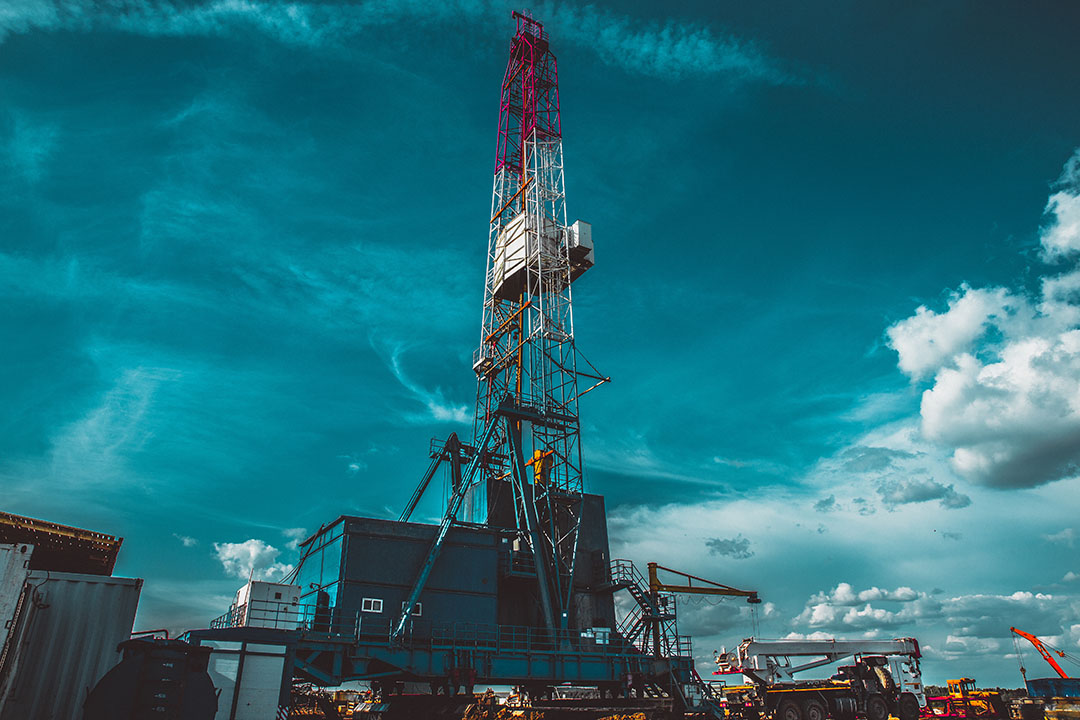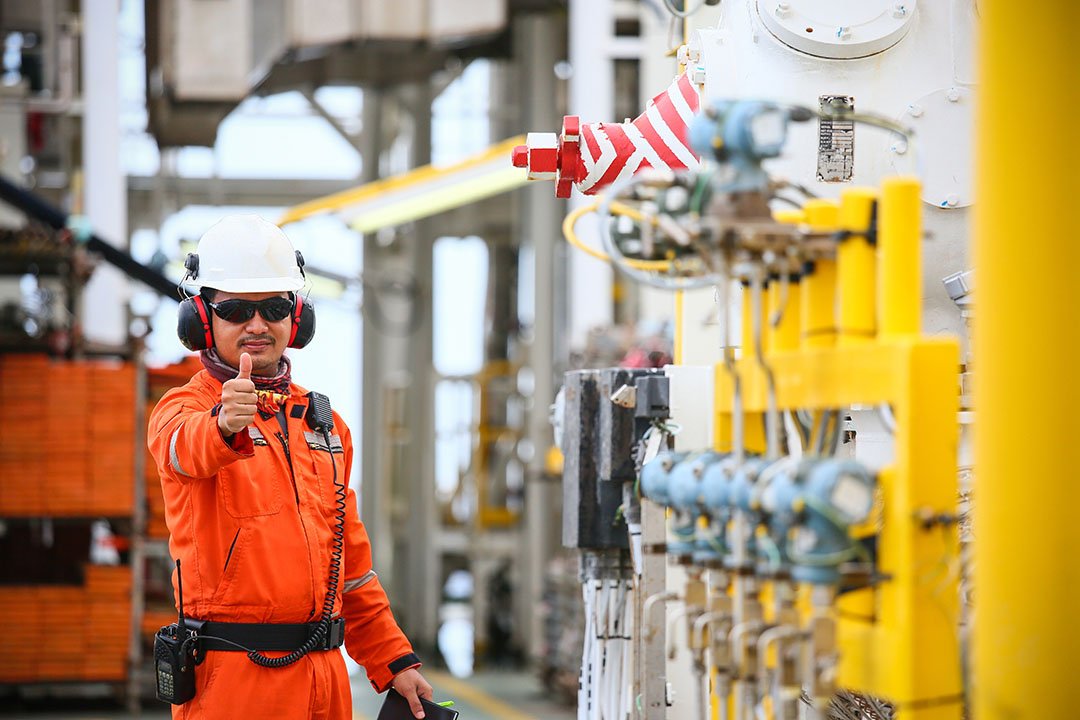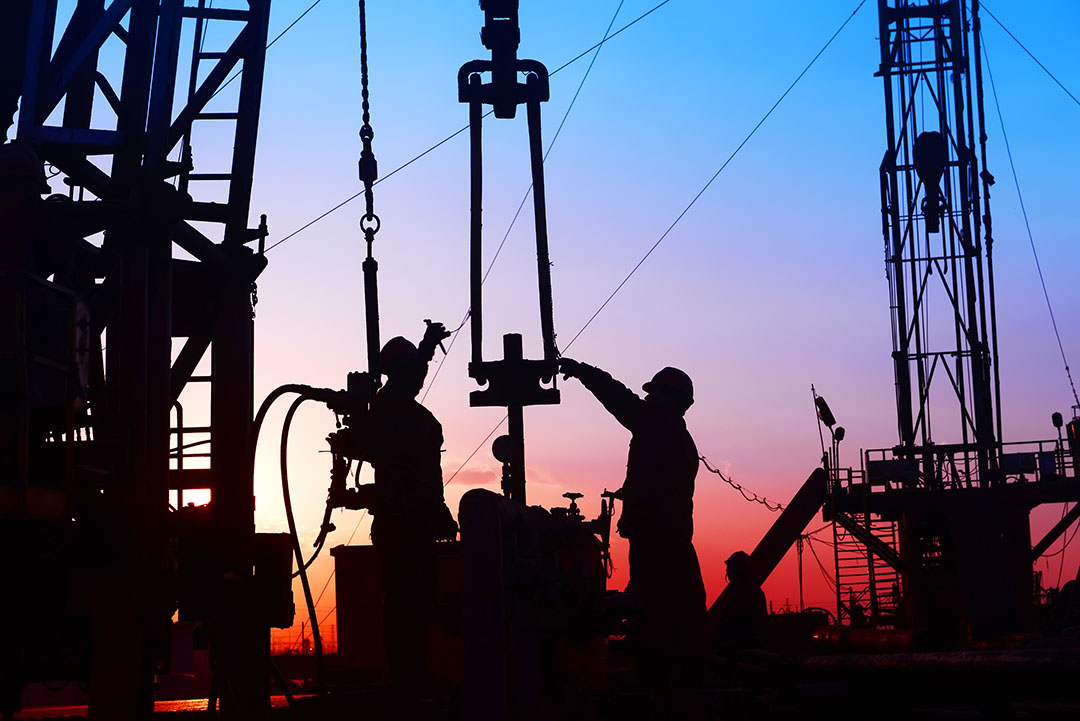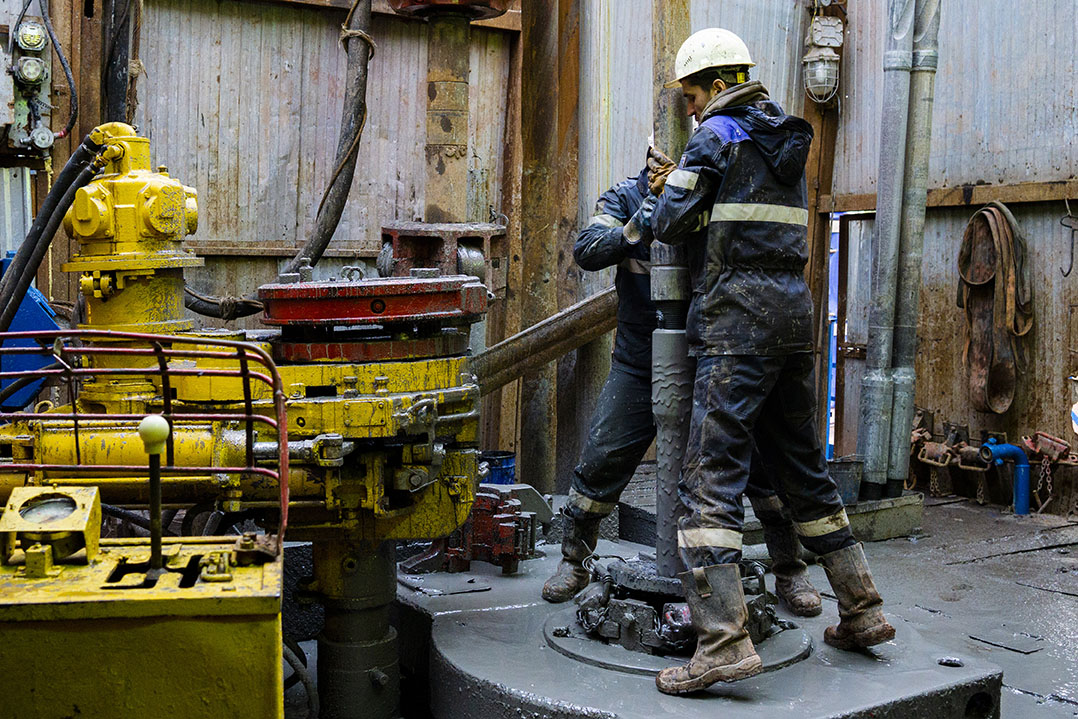Work on an oil and gas rig can be exciting, fast-paced and lucrative, but it can also be deadly. Of the 15 industries tracked by the Census of Fatal Occupational Injuries from the U.S. Bureau of Labor Statistics, fatality rates within the oil and gas industry are third behind only transportation, agriculture and forestry. Hazard control is critical on oil rigs, making it crucial for both employers and employees to participate in safety programs to help prevent unnecessary risk.
Oil & Gas Rig Basics

Oil and gas rigs are set up on land that is anticipated or known to have oil and/or natural gas deposits that can be extracted. A familiar sight for most is the derrick, which looks a bit like the Eiffel Tower. Underneath the derrick, workers add pipe to and remove pipe from the drill string, which the drill bit is attached to. A mixture of chemicals, called drilling fluid or mud, flows through the drill string to help maintain pressure in the well and flush drilled material upward. Once drilling is finished and the well is determined to be viable, the well is completed with casing and equipment to monitor the flow of gas and oil.
Identifying Hazards on a Rig

Each job on a rig has its own unique hazards, and while some hazards will be the same across jobs, others require different controls. To identify the best controls for a position, employers and employees can work together using a job hazard analysis, or job safety analysis. Starting with the most hazardous position, employers and employees should identify the potential hazards of each job. For each role, you could ask questions like:
- What can go wrong?
- How could it go wrong?
- What are the consequences?
- How likely is it to occur?
By regularly reviewing job hazard analyses, especially when a position changes, employers can help prevent incidents and near misses from occurring.
Common Chemical Hazards

Diesel particulate matter, or DPM, is produced by diesel engines, commonly used to power heavy machinery, vehicles and other equipment. In high concentrations, DPM can cause headaches and irritation of the nose and eyes and, over a long period, can lead to cancer. Inhalation can be prevented through the following methods:
- Regular maintenance of diesel engines
- Installing engine exhaust filters
- Providing filtered air in cabs
Flammable substances on well sites include the well itself, trucks and shale shakers. It would be easy for static, open flames, lightning, hot surfaces or smoking to ignite a substance, causing significant damage and possibly death. Employees play a significant role in preventing fires, including:
- Using only approved areas for smoking
- Never using a lighter or flame-producing device anywhere with a “No Smoking” sign
- Wearing fire-resistant clothing as required by your employer
- Following all required procedures and permit requirements for hot work
Looking for more online safety training courses?
VIEW THE 800+ COURSES AVAILABLE!
Hydrogen sulfide, or H2S, is created by decomposing organic matter and is a natural component in “sour” oil and gas formations. H2S can also occur in pits, tanks and other low-lying areas. Even at low concentrations, H2S can cause unconsciousness or even death. Employers must conduct active monitoring for the gas as well as provide a site-specific hazard orientation for anyone visiting a worksite.
In addition to H2S, naturally occurring radioactive material, or NORM, can be released from the formations and can include uranium, radium and lead. It is commonly found in sludge and drilling mud and must be monitored for by employers. If exposure is a risk, a sign with the words “CAUTION, RADIATION AREA” must be posted and regular radiation surveys, film badge monitoring and radiation-free break and storage areas must all be provided.
Equipment Hazards
Both heavy equipment and motor vehicles are common on oil and gas sites and they carry their own sets of risks. The Census of Fatal Occupational Injuries reports that approximately “four of every 10 workers killed on the job in this industry are killed as a result of a highway vehicle incident.” Drivers who are transporting materials or workers must be aware of the dangers of driving while tired or distracted. Regular rest is critical, and drivers should not use their phone, eat or drink while driving. Once on the site, workers are at risk of being struck by, caught in or caught between moving vehicles and equipment, falling equipment and high-pressure lines. Injuries can be prevented by using tag lines, safety lines and completing frequent maintenance.
In addition to struck-by, caught-in or caught-between hazards, heavy machinery on oil and gas sites can shock, burn or electrocute employees servicing or maintaining them. Employers must maintain a lockout/tagout program to help prevent accidental startup of equipment. Only employees who have been properly trained and authorized should be repairing or maintaining equipment and any hazards should be reported to a supervisor immediately.
Work Environment Hazards
Oil and gas rigs can be found in many climates, from the bitter cold to the scorching heat, and these unique environments can lead to hazards. Noise, temperature, fatigue, confined spaces and falls can affect employees in all climates.
Rigs are loud places, with diesel engines, semi-trucks or other large vehicles, and even the drilling itself. Employers must maintain an ongoing hearing conservation program if the exposure is at or above the Occupational Safety and Health Administration’s action level.
Temperatures can vary on rig sites, with some in constant climates like the desert and others in climates with significant variation, like cold winters and hot summers. Employers must ensure any employees working in the cold are:
- Dressing properly for the cold
- Staying dry
- Keeping dry clothing to change into
- Drinking warm, sweetened, non-alcoholic beverages
If working in the heat, employers should provide employees with plenty of cool water and monitor the weather reports.
While working on a rig, employees are at risk of slips, trips, and falls. Workers like the derrickman, who work at significant heights, could fall off the work surface, possibly striking workers or equipment below or falling into open pits or tanks. Maintenance and housekeeping are important as well to prevent a buildup of debris or clean up spills. Never store or leave anything in a walkway, and if you notice a hazard in a walkway, either fix it or notify someone immediately.
Conclusion
Oil and gas rigs are, perhaps unsurprisingly, one of the most dangerous jobsites. In order to minimize injuries and fatalities, the employer and all employees must be aware of the inherent risks and understand safety procedures before stepping onto an oil rig.
With proper training, regular equipment maintenance and worker awareness, the risk of injury and fatality can be minimized. SafetySkills offers an Oil Rig Safety course to introduce workers to basic terminology and the major hazards of an oil rig, along with more than 40 other interactive courses specific to the oil and gas industry.


